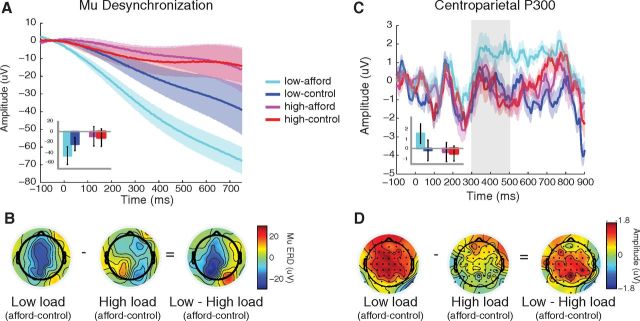Figure 3.
Electrophysiological affordance measures for centroparietal midline electrodes. A, For the low load condition, there was significantly greater mu desynchronization (in the 7–10 Hz range) for the affording versus the control object, demonstrating an affordance effect. There was no difference in mu desynchronization in the high load condition. B, The topographic map for the mu desynchronization showed a strong affordance effect over centroparietal electrodes (Cz, CPz, Pz) in the low load condition, whereas the topographic map for the high load condition showed no evidence of an affordance effect anywhere in the brain. The interaction between Load and Object was strongest for more posterior regions of the left hemisphere. C, For the low load condition, the amplitude of the P300 ERP was significantly greater for the affording object compared with the nonaffording control object. This was consistent with the mu desynchronization results, as was the lack of a difference in P300 amplitude in the high load condition, resulting in a significant interaction. D, The topographic map for the P300 shows a strong affordance effect over centroparietal electrodes in the low load condition, yet no differences in the high load condition.

